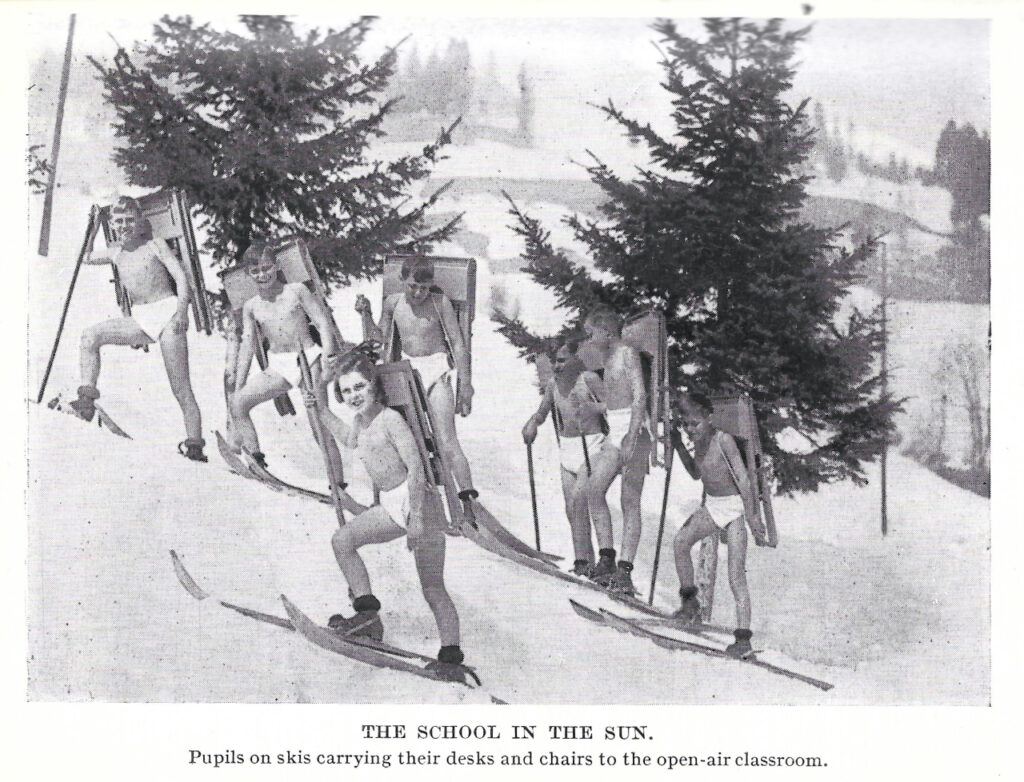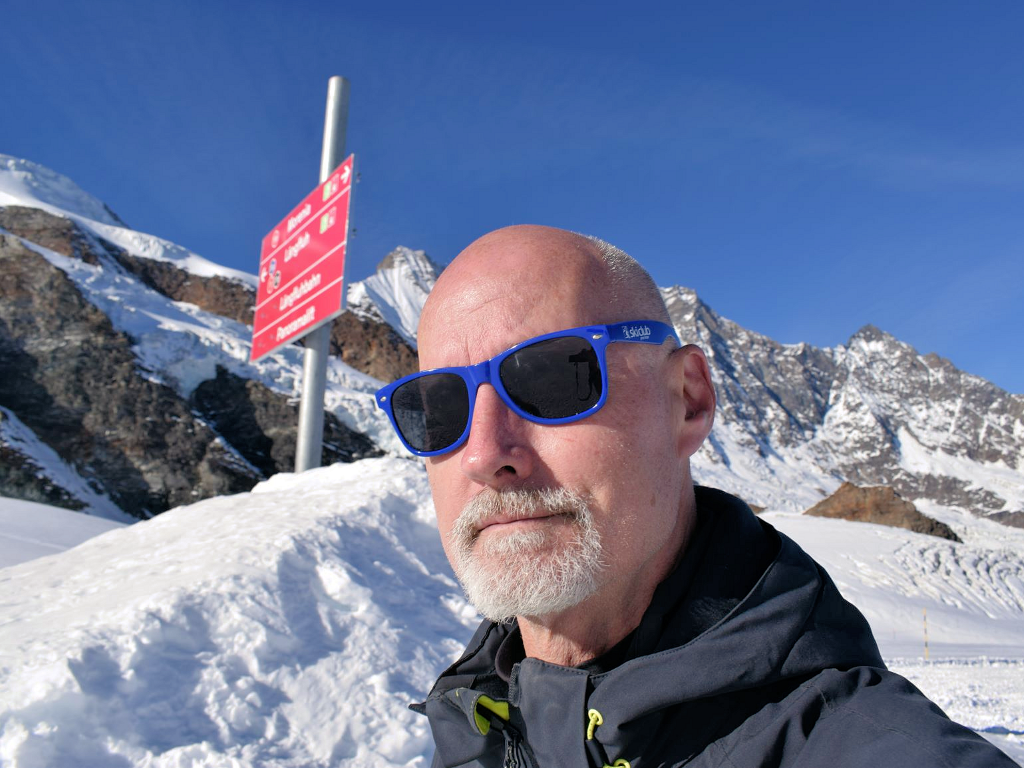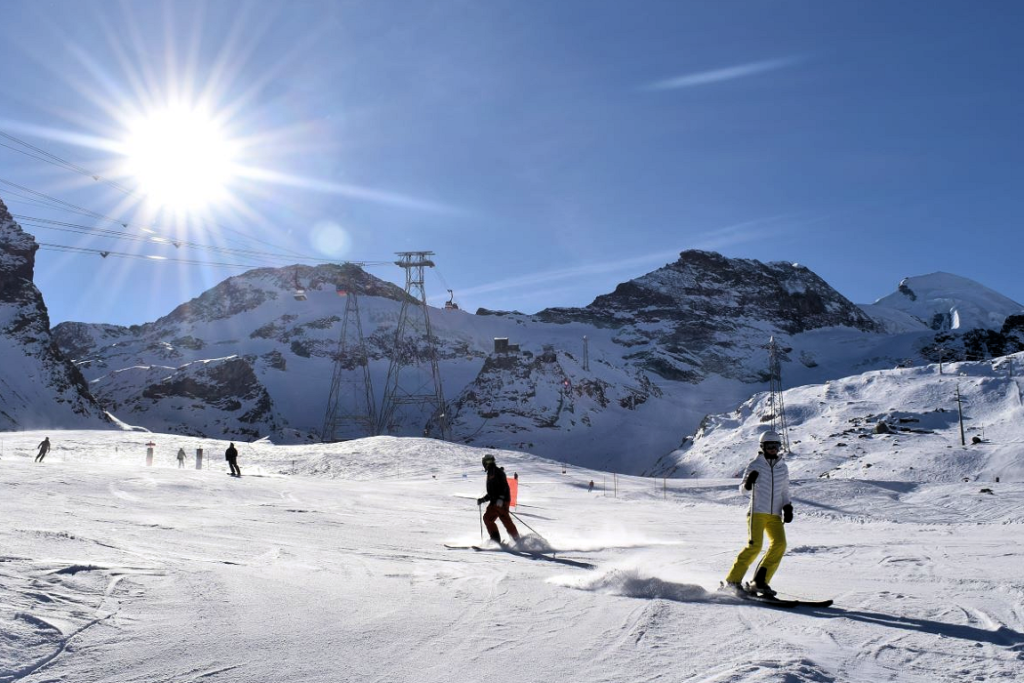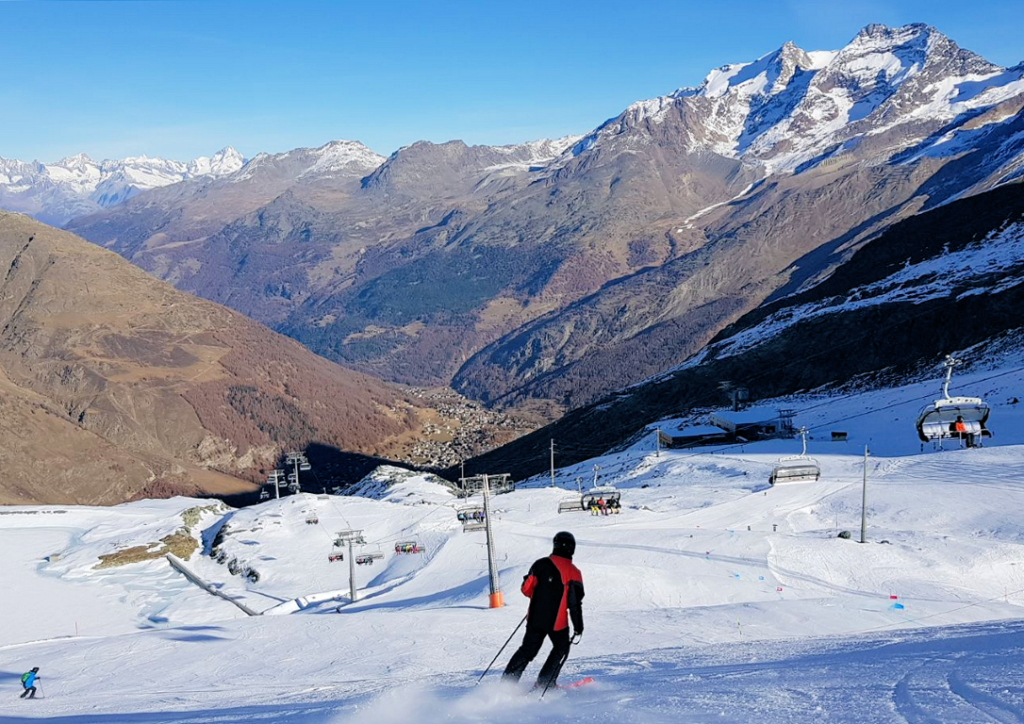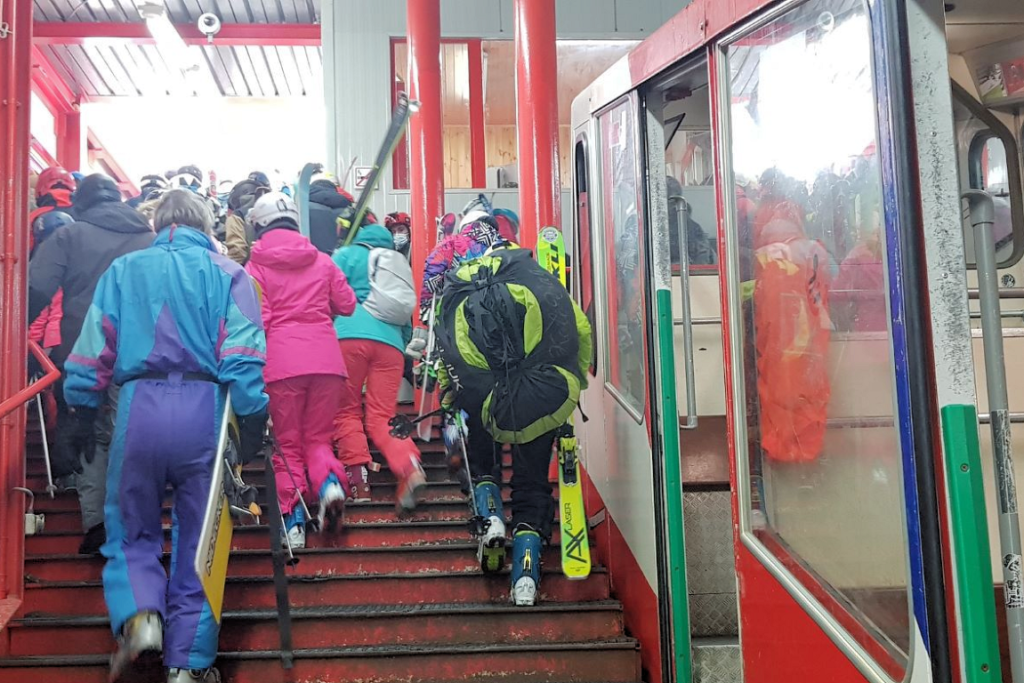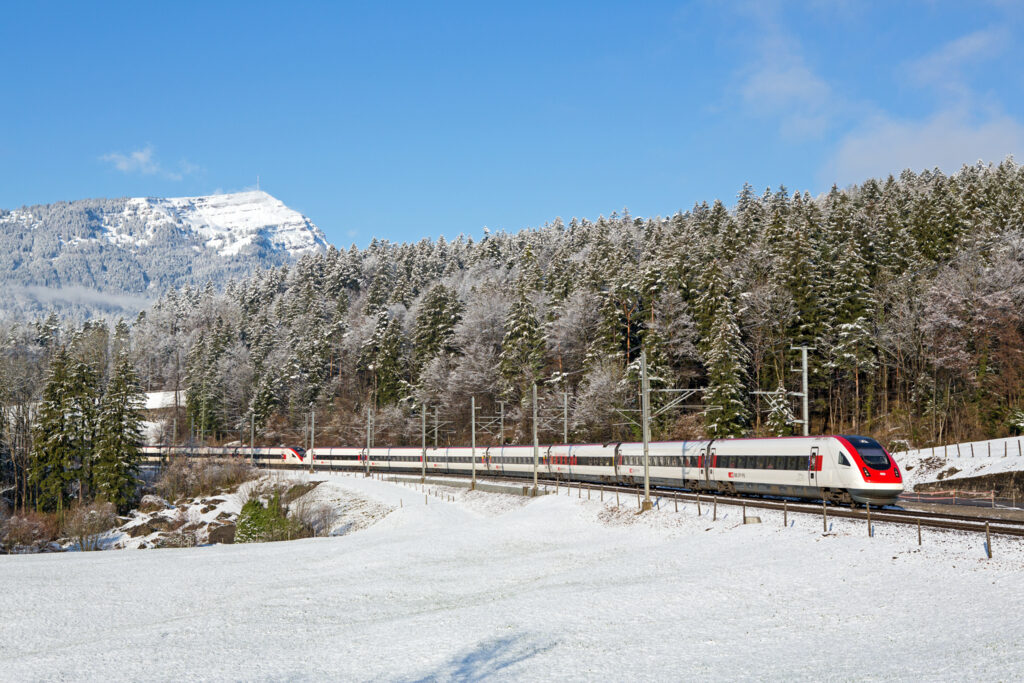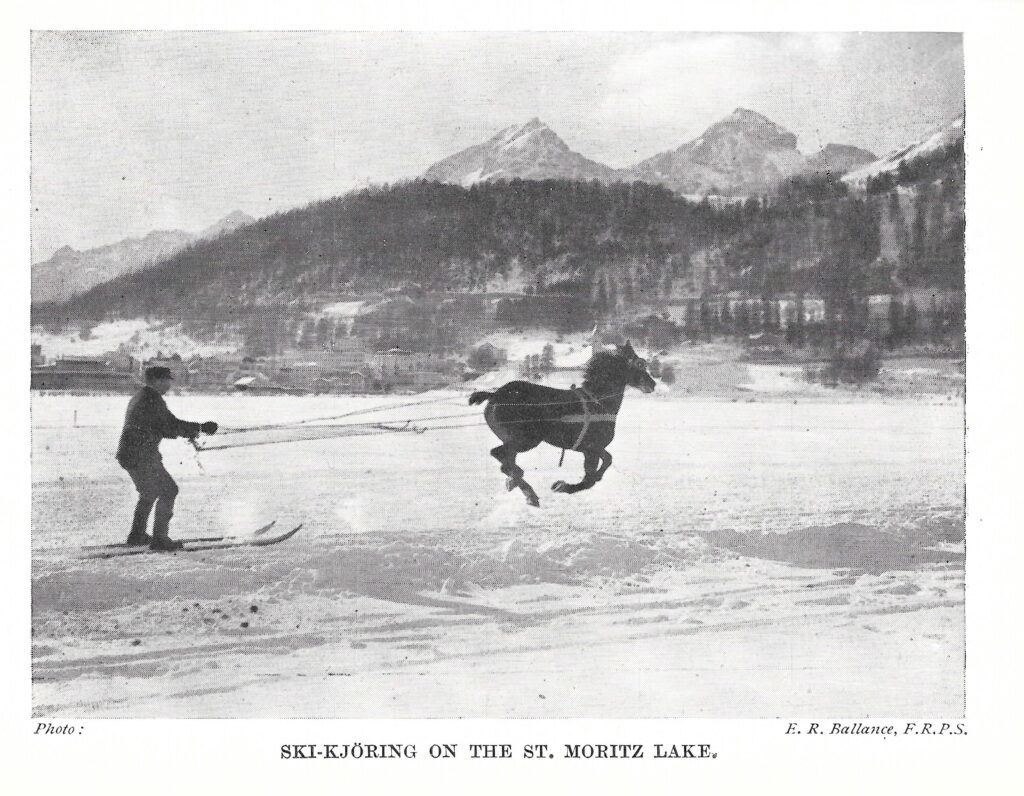
Although I have been skiing for over 50 years, I don’t have a great sense of it changing much since I first tumbled down a Scottish mountain. OK, we did wear some uncool ski outfits back then, nobody snowboarded and there were a higher proportion of surface lifts. But I don’t remember it being so different. Largely the same resorts and the same vibe in them.
Track back another 50 years, and what was often called ski running involved very long wooden skis, one stick and a pair of stout leather ski boots. And it was by no means the major attraction for people visiting the Alps in winter.
I’ve been reading “Things Seen in Switzerland in Winter”, written by Charles Domville-Fife in 1925. He writes that interest in visiting Switzerland was divided between those for whom it was termed “The Playground of Europe”, and those who went hoping to recover from tubercolosis.
Until 1946 there was no effective medication to treat tubercolosis, a disease that killed as many as one in four people in England in the 19th Century. Swiss mountain air and sunshine achieved a remarkable recovery rate in the clinics that sprung up in hitherto sleepy hamlets like Davos and Arosa in the late nineteenth century. And the therapeutic benefits were enjoyed as much, or even more, in the winter.
St Moritz had also become a popular destination for its winter sun and the many diversions organised in the sophisticated hotels there – the hotelier Badrutt taking a lot of credit for popularising winter holidays in the Engadine. In 1873 for the first time St Moritz recorded more winter visitors than summer ones.
One English visitor to Switzerland in the late nineteenth century was Sir Arthur Conan Doyle, who stayed in Davos where his wife was recuperating from tuberculosis. Ever impatient to be doing something, he imported some skis from Norway (where skiing had long been a practical means of transport) and became the first person to ski from Davos to Arosa – still a popular back country route. In 1893 he wrote an article in the English press of his experiences and helped popularise what was to diverge from Norwegian ski techniques to become what we now know as the sport of downhill skiing.
Skiing was by no means the only winter sport that became popular in Switzerland. Domville-Fife records that skating was introduced as a winter sport in 1876 (from England), curling (from Scotland) in 1882, tobogganing (from Canada) in 1884, ice hockey (also from Canada) in 1992 and the quaint sport of skijoring (from Scandinavia) in 1906.
In the second half of the nineteenth century Switzerland benefitted from a growing electrified rail system, opening up destinations such as the new sanatoria in Montana and Leysin, and new winter sports destinations like Klosters, Celerina, Grindelwald, Wengen, Murren, Gstaad, Villars, Engelberg and Andermatt. Adelboden later emerged as both a health centre and a ski destination, with the world’s first winter sports holiday package organised by Sir Henry Lunn in 1903. Outside of Switzerland, Chamonix and St Anton – both with rail links – were early adopters of sport skiing, St Anton claiming to have founded the first ski club in 1901.
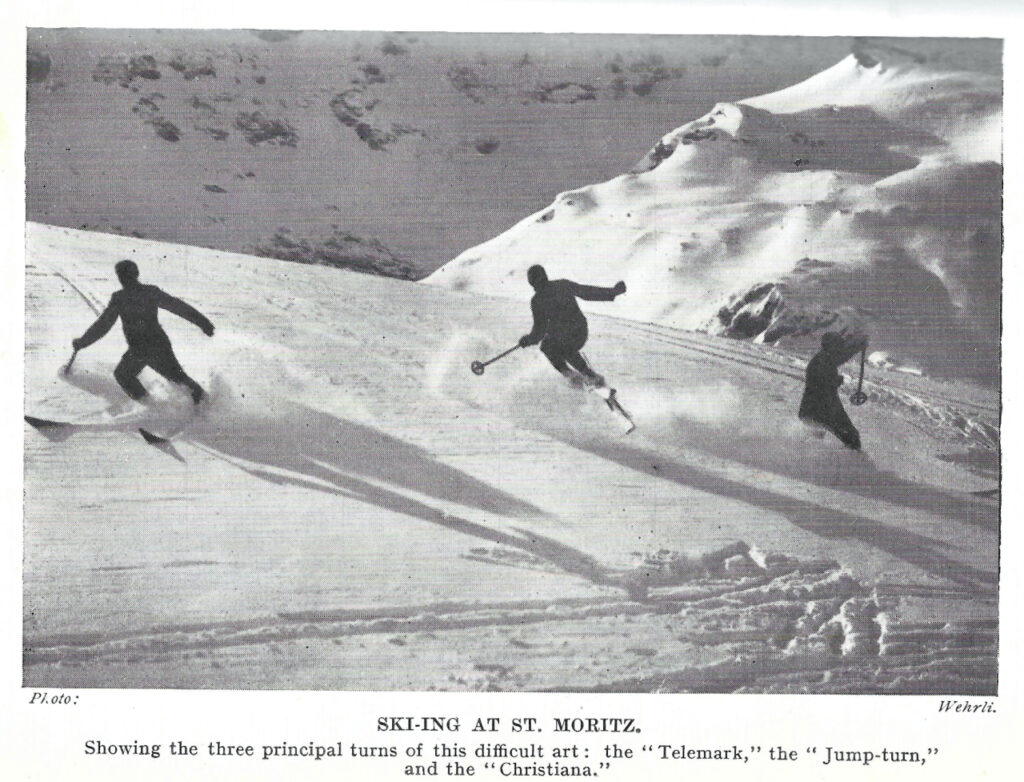
Most of the new winter sports were introduced by the British, but soon became popular with the Swiss and visiting Germans. The opening of the cog railways in winter in Grindelwald, Wengen and Villars are attributed to British requests that they be available outside the summer timetable.
It’s noteworthy that, at this time, British tourists tended to come over only in December and January, and what we now largely associate with the peak winter sports period was left to the locals. Domville-Fife declares that “at nearly all the best known resorts the predominance of British people during Christmas and New Year festivities is usually so great that even the Swiss themselves are scarcely seen. It is during this period and for about five weeks afterwards that a sojourn at any of the winter sports centres becomes one of the most delightful experiences of life”.
Domville-Fife, writing in 1925, doesn’t mention a single ski destination in the canton of Valais, now probably the pre-eminent ski region in the world. Champéry, in the Portes du Soleil did not have its first lift access to the slopes until 1939, Verbier’s first lift arrived in 1946, Saas-Fee a popular summer spa destination did not have road access until 1950 and Zermatt, although it has had the Gornergrat cog railway since 1898, was primarily known as a summer destination for climbers, and did not open the railway to the summit during the winter season until 1941. Only Montana (later Crans-Montana), had adopted skiing by 1925, following the opening of the funicular railway in 1911. However the village was still mostly popular for its sanatoria and, from 1906, for golfing.
Skijoring, meanwhile, has its adherents but has achieved only a limited popularity. Although my Swiss mother-in-law recalls skiing to school on skis, I don’t think it looks anything like this today at Aiglon College!
